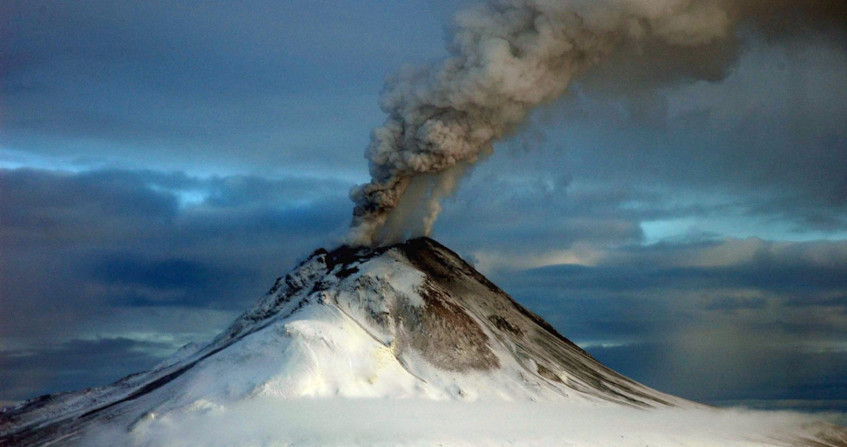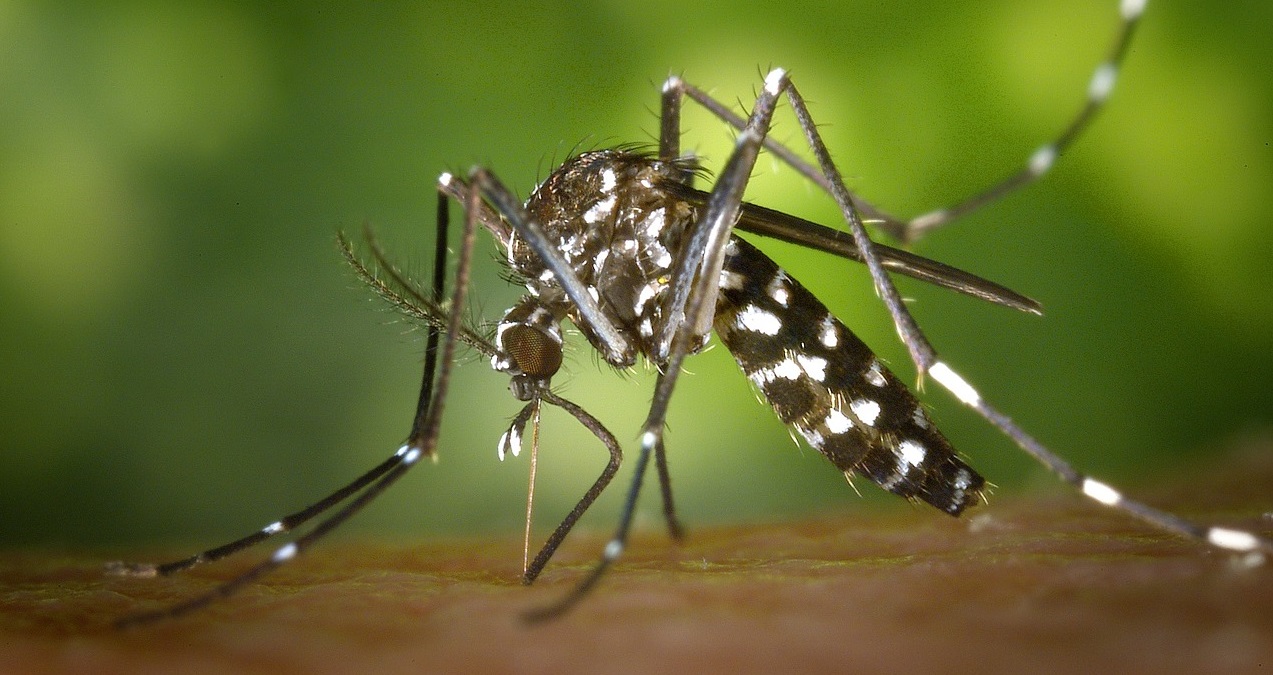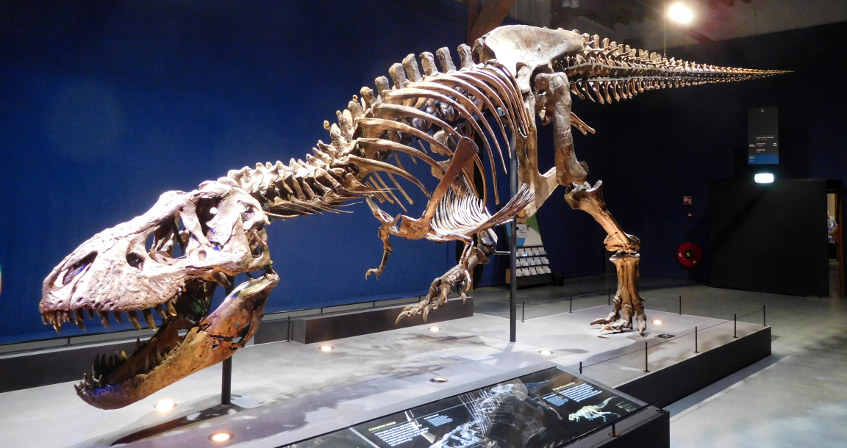How vertebrate extinctions threaten tropical forests
PDF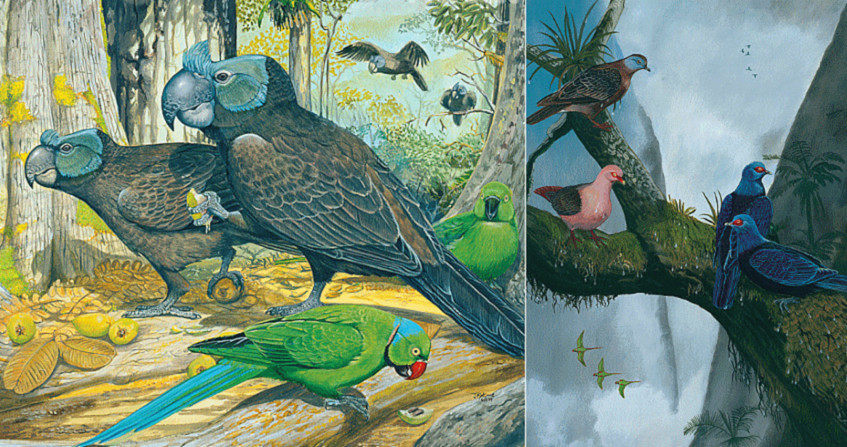
Most tropical trees produce fleshy fruits that are eaten by vertebrates (known as frugivores) that disperse plant seeds. The regeneration of tropical forests therefore depends on frugivore populations, which are in sharp decline, or even extinct in many parts of the world. This is the case of the emblematic dodo that disappeared from Mauritius shortly after its colonization by humans, as well as most of the frugivorous vertebrates of the Mascarene Islands. These volcanic islands of the Indian Ocean constitute a unique model to study the consequences of vertebrate extinction on forest dynamics. Indeed, the history of vertebrate extinctions is very well documented, and the analysis of floristic compositions of lava flows of different ages allows to reconstitute the dynamics of their recolonization by plants, and to highlight the impact of extinctions of frugivorous vertebrates on the functioning of tropical forests.
1. Why study the consequences of extinctions in the Mascarene Islands?
1.1. The importance of frugivory in the functioning of forests
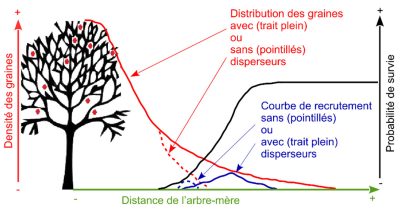
Among plant-animal interactions, the interactions between frugivorous vertebrates and fleshy-fruited plants have long remained little studied, compared to herbivory or pollination. Indeed, it was not until the work of Janzen and Connell that the crucial influence of dispersal on plant population and community> dynamics was recognized (Figure 1) [1].
Many ecosystems are largely dominated by plants with fleshy fruits. For example, they represent between 75% and 90% of woody plants in the tropical rainforests of Central Africa, Papua or Costa Rica [2] and between 54% and 90% of tropical island forests [3]. If we consider a broader definition of frugivory by including some dry-fruited plants, temperate forests themselves have between 25 and 55% of plants adapted to dispersal after ingestion by vertebrates [2]. Thus, frugivory plays a central role in the functioning of most ecosystems at global scale.
Until the 1990s, frugivory was mainly studied as a co-evolutionary process of interaction between two species. With the acceleration of biodiversity loss and generalized defaunation, the issue of tropical forest conservation has become central. Indeed, trying to preserve a forest dominated by fleshy-fruited trees could be totally ineffective in the absence of dispersing frugivores (Figure 1). Worse, vertebrate collapse could compromise the very ability of ecosystems to rebuild at a time when large-scale destruction of tropical ecosystems continues and global warming makes plant mobility crucial [4]. The global collapse of vertebrate populations that we are currently experiencing thus raises worrisome questions about the resilience of these ecosystems. This is especially true since large vertebrates, which are the most capable of efficiently dispersing a multitude of woody species, are disappearing first [5],[6].
1.2. The interest of the Mascarene Islands as a study system
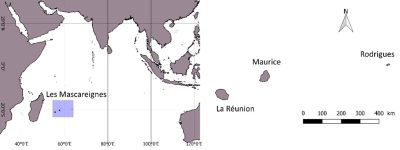
- The Mascarenes are devoid of terrestrial mammals, but also of continental bird forms such as hornbills, which are often important frugivores in Old World tropical forests.
- These absences provide vacant niches that are occupied by reptiles (giant land tortoises and skinks), bats (flying foxes), and especially diverse lineages of birds: bulbuls [9] (Figure 3), hoopoes, pigeons, parrots, rails, and white eyes.
- Among the birds, the pigeon family plays a particularly important role in the Mascarenes and includes various species of founingos [10] and dodos. The latter birds, which have lost the ability to fly, probably never existed in Reunion Island because of the relative geological youth of the island.
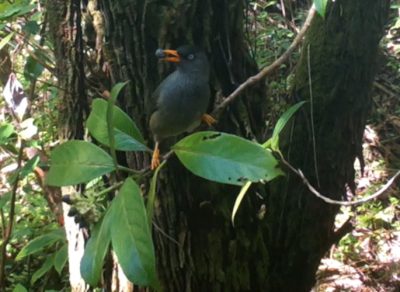
Because there is a strong correlation between frugivore population size and dispersal efficiency [12], it is likely that the plant species that were consumed by this hyper-abundant fauna enjoyed highly efficient dispersal. The faunal collapse that followed the onset of human colonization in the 17th century probably had, and still has, deleterious consequences on the regeneration of many species of fleshy-fruited plants.
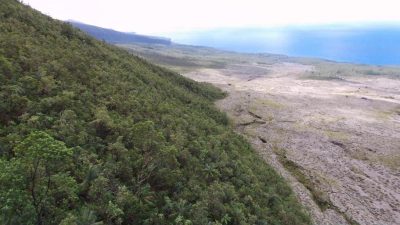
Finally, the Mascarene Islands present a remarkable plant diversity despite their relative distance from continental sources. The flora of the archipelago is now well known from the taxonomic and functional points of view in comparison with the large continental forests. These elements, combined with the good knowledge of the original fauna of the archipelago and its extinction kinetics, contribute to make it a remarkable system for studying the long-term consequences of the breakdown of frugivory interactions.
2. Rapid extinctions since human colonization
2.1. A terrible record in the Mascarenes, as in the oceanic islands
The collapse of vertebrate populations is now global [15], but the islands have experienced a major faunal collapse with human colonization. The largest documented wave of vertebrate extinctions in the last 20,000 years occurred in the birds of the Pacific, where an estimated 2,000 species became extinct due to human colonization [16]. These were mainly land birds (rails, pigeons, parrots and passerines), among which were many frugivorous species. These island birds disappeared mainly for the following reasons:
- Destruction and fragmentation of native habitats;
- Hunting;
- The introduction of terrestrial vertebrates, mainly mammals (rats, cats, dogs and pigs in the lead) which rapidly decimated these species deprived of escape or protection behavior from predators.
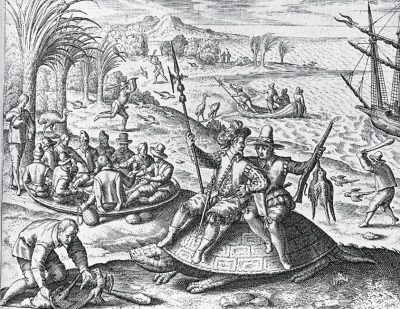
In the Mascarene Islands, the accounts of early explorers (Figure 5) and the subfossil record give us a relatively accurate history of the defaunation of frugivores [8, 11].The world’s largest skink probably became extinct in Mauritius before the 15th century, the dodo as early as the 17th century and the Rodrigues solitaire in the 18th century. The giant tortoises, the rougette, the hoopoes, the founingos and all the parrots except the Mascarene parakeet, whose populations were often very reduced at the end of the 18th century, are all extinct in the second half of the 19th century.
Today, only the Mauritian flying fox, the Mascarene parakeet and the Telfair skink (in Mauritius only), the Rodrigues flying fox, as well as the bulbuls and white eyes remain from the original frugivore fauna. The rapidity of the extinctions appears puzzling, particularly in Reunion Island where the populations of all the large frugivores had collapsed in 70 years after the settlement of humans and became extinct in less than two centuries of permanent human colonization. Bory de Saint Vincent who, during his visit in 1801, surveyed Reunion Island, noted that there were still majestic forests in the South-East of the island, but that the large fauna was totally absent.
2.2. Forests without frugivores and frugivores without forests: understanding the Reunion / Mauritius paradox
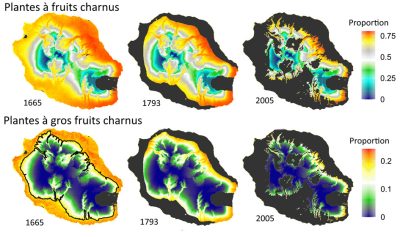
To understand this paradox, the chronology of extinctions and the main factors involved since the beginning of human colonization have been studied [18]:
- The number of introductions of exotic vertebrates, especially predators known for their devastating impact on islands
Not only has Mauritius Island earlier introductions of predatory mammals (Rattus), but also in greater numbers with – for example – macaques and mongooses which have never been introduced to Reunion Island.These multiple introductions have nevertheless spared some islets in the North of Mauritius which have become important sanctuaries for various species of reptiles.
- Overhunting, linked to changes in human demography.
The settlers of both islands were inveterate hunters, and although Reunion Island was overhunted earlier than Mauritius, the explosion of the human population in Mauritius from the end of the 18th century onwards did not lead to the total extinction of its large native fauna.
These two factors alone cannot explain the observed paradox.
- Habitat transformation, considering the altitudinal characteristics of remnant habitats and the underlying functional implications.
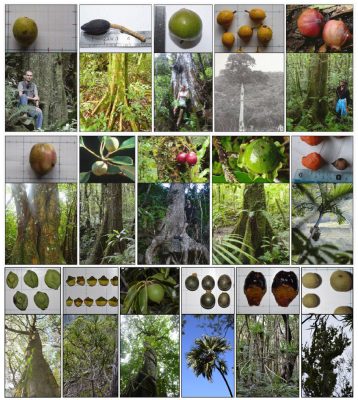
Several vertebrate species came close to extinction in the second half of the 20th century, but ambitious conservation measures have allowed them to return to less worrisome population sizes. This is the case of the pink pigeon and the Mascarene parakeet in Mauritius, which may soon make a comeback in Reunion Island (see Focus: What can be done to restore dispersal?).
3. The consequences of the loss of frugivores on forest regeneration
3.1. Rich native forests unable to rebuild
Understanding how disruption of interactions between fleshy-fruited plants and frugivorous animals can alter the diversity and dynamics of plant communities over the long term remains a challenge. Because of the generally long life span of woody fleshy-fruited plants, such studies must indeed be conducted over a long time frame.
The chronosequence of more than six centuries of lava flows from the Piton de la Fournaise allows us to compare changes in the richness and composition of different plant guilds established before and after human colonization of Reunion in 1665 (Figure 8) [19]. In lowland tropical rainforests:
- 151 floristic surveys are analyzed on 28 lava flows dated between 1401 and 1956, and on older substrates (> 1000 years). These surveys are classified into 5 substrate age classes used as a proxy for native frugivore availability:
- Surveys on “old substrates” (with soil) and on flows dated between 1401 and 1665 when frugivores are abundant and diverse prior to permanent human colonization;
- Surveys on flows from 1665 to 1800, when populations of large frugivores were greatly reduced;
- Surveys on flows from 1800 to 1900, when large frugivores got extinct and small frugivores were still abundant;
- Surveys on flows from 1900 to 1956, when small frugivore populations also declined.
- Dispersal syndroms of 146 native woody species are characterized: anemochorous plants, other dry-fruited plants, small fleshy-fruitedplants, and large fleshy-fruited plants, with the fruits of the latter theoretically not dispersible by small frugivores.
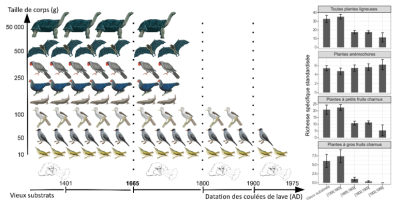
- The communities established before human colonization have a high species richness and a comparable composition. They are largely dominated by fleshy-fruited species and rich in large fleshy-fruited plants (see also Figure 7).
- In the communities established shortly after the beginning of human colonization, diversity declines very sharply, especially in large fleshy-fruited plants. The latter almost disappear on the post-1800 flows despite often favorable conditions (Figure 9).
- The richness of small fleshy-fruited plants decreases less rapidly than the richness of large fleshy-fruited plants, with medium levels in the 17th to 19th century flows, then low levels in the 20th century flows. In fact, the more fragmented by lave flows the forests are (Figure 4), the higher the negative impact on the richness of this guild (Figure 8). This effect is most visible on historical flows, showing that the loss of large frugivores has severely impaired the long-distance dispersal ability of small fleshy-fruited plants.
- In contrast, the richness of anemochorous plants remains stable throughout the chronosequence due to a much lower barrier to dispersal.
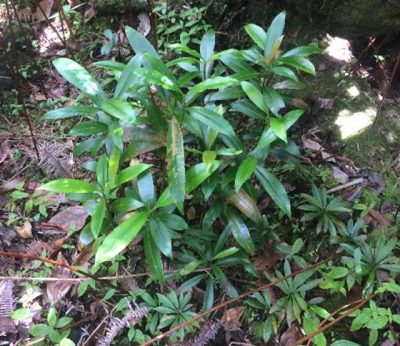
Finally, an important lesson of this study concerns the reservations around the use of chronosequences to study ecological succession [14]. For what has long been interpreted as typical stages of forest development in Reunion Island is in fact only a signature of their capacity to reconstruct themselves at a given date. In two centuries 200-year-old forests nowadays will not resemble those that are 400 years old today, mainly because the most emblematic plants of old-growth forests cannot reach them. This is all the more worrying because other disruptions to forest dynamics are at work, with recent lava flows, for example, now largely invaded by alien plants that have no trouble dispersing.
3.2. Native plant diversity on borrowed time in old-growth forests
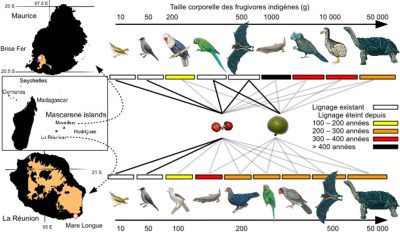
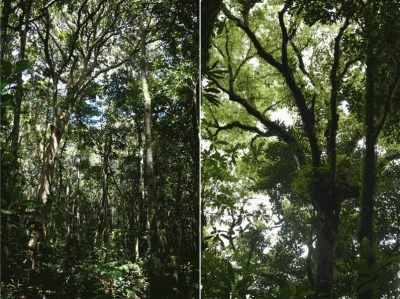
- The Reunion bulbul, the largest frugivore still present on this island, does not effectively disperse most of the large canopy trees despite still playing an important role for various small-fruited plants.
- Conversely, the large frugivorous vertebrates still present at Brise Fer allow massive recruitment of many plants, but do not seem to efficiently disperse the large-seeded plants they feed on for
There are other limitations to recruitment, such as seed predation by rats or browsing of seedlings and saplings by introduced mammals (Java deer, crab macaque), that require further study to unravel these results. But these limitations probably act secondarily to dispersal limitation.
In the long term the loss of diversity observed in the juvenile cohorts could lead to a significant depletion of the canopy at Mare Longue and to a strong shift in the canopy composition at Brise Fer.
Finally, these results show that at Brise Fer, where the guava (Psidium cattleianum) invasion was controlled in the 1990s, the forest retains a certain resilience thanks to the maintenance of the large frugivore fauna. Conversely, the uninvaded forest of Mare Longue, often considered one of the most beautiful testimonies of tropical rainforest in the archipelago, will continue to lose diversity inexorably if dispersal is not restored by direct sowing or reintroduction (see Focus on What to do to restore dispersal?).
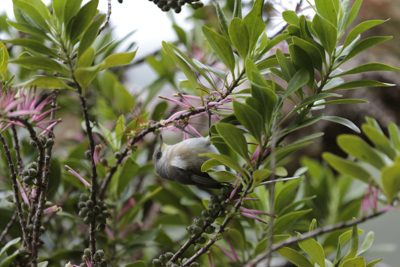
4. Messages to remember
- Fruit-eating vertebrates play a crucial role in tropical forests that are largely dominated by fleshy-fruited plants. The loss of vertebrates therefore raises worrying questions about the future of these ecosystems.
- The Mascarene Archipelago is a remarkable study system because the history of vertebrate extinctions and its rich island flora are well known.
- Reunion Island has lost all its large frugivores, while Mauritius still retains some despite the loss of 95% of its native habitats. It is the early loss of lowland habitats in Reunion that explains this paradox.
- The loss of frugivorous vertebrates had resulted in the incapacity of the rainforest to rebuild for over 200 years on the lava flows of Piton de la Fournaise.
- A comparison of the best preserved old-growth forests of the archipelago shows that the regeneration is causing greater concern in Reunion Island than in Mauritius Island where extant flying foxes play a key role.
- It is possible to restore the recruitment of various tree species thanks to direct sowing.
- Nevertheless, the return of large frugivores would ensure effective seed dispersal for multiple native plants.
Notes
Cover image. An artist’s views of vertebrates in the Mascarene Islands before human colonization. On the left, frugivory interaction in a Mauritian understorey between the fleshy fruits of an endemic threatened Sapotaceae (Sideroxylon) and: (i ) in the background, the Mauritian parrot Lophopsittacus mauritianus (extinct in the 17th century) which was one of the largest parrots in the world, and (ii) in the foreground, the green echo parrot Psittacula eques echo (vulnerable), the only native parrot species still present in the Mascarene Islands. On the right, birds perched in a wall in Reunion Island. In the foreground, three species of pigeons, including the blue founingo (Alectroenas sp., extinct in the 18th century); in the background, the Mascarene parakeet (Psittacula eques eques, extinct in the 18th century). Illustrations © Julian Hume reproduced with permission of the author.
[1] Janzen D.H. (1970) Herbivores and the Number of Tree Species in Tropical Forests, The American Naturalist, 104, p. 940(DOI 10.1086/282687); Connell J.H. (1971) On the role of natural enemies in preventing competitive exclusion in some marine animals and in rain forest trees, in P. J. Den Boer & G. R. Gradwell, Dynamics of Population, Wageningen: Pudoc; Terborgh J. et al. (2008) Tree recruitment in an empty forest, Ecology, 89, 1757-1768, http://doi.wiley.com/10.1890/07-0479.1.
[2] Jordano P. (2000) Fruits and Frugivory, in Seeds: the ecology of regeneration in plant communities,2nd ed. by M. Fenner, Oxon, UK ; New York: CABI Pub, p. 125 166.
[3] Albert S. (2020) Rupture des interactions mutualistes plantes à fruits charnus-vertébrés frugivores, et conséquences sur la régénération des forêts tropicales dans les Mascareignes, Doctoral dissertation, Université de La Réunion, Available at: https://tel.archives-ouvertes.fr/tel-03126708
[4] McConkey K. R. et al. (2012) Seed dispersal in changing landscapes, Biol. Conserv. 146,1-13. Available at: http://www.sciencedirect.com/science/article/pii/S0006320711004575
[5] Dirzo R., Young H. S., Galetti M., Ceballos G., Isaac N. J. & Collen B. (2014) Defaunation in the Anthropocene, Science, 345, 401-406. https://www.science.org/doi/abs/10.1126/science.1251817
[6] Guimarães P. R., Galetti M. & Jordano P. (2008) Seed dispersal anachronisms: rethinking the fruits extinct megafauna ate, PLoS ONE, 3(3): e1745, https://doi.org/10.1371/journal.pone.0001745
[7] Albert S., Flores O., Rouget M., Wilding N. & Strasberg D. (2018) Why are woody plants fleshy-fruited at low elevations? Evidence from a high-elevation oceanic island, J. Veg. Sci. 29, 847-858, doi: 10.1111/jvs.12676.
[8] Cheke A. S. & Hume J. P. (2008) Lost land of the dodo: an ecological history of Mauritius, Réunion & Rodrigues. New Haven: Yale University Press.
[9] Common name for a genus of frugivorous pigeons endemic to the South West Indian Ocean Islands. See https://fr.wikipedia.org/wiki/Pycnonotidae
[10] Common name for a genus of frugivorous passerines belonging to the family Pycnonotidae. See https://fr.wiktionary.org/wiki/founingo
[11] Lougnon A. (2005) Sous le signe de la tortue : voyages anciens à l’Île Bourbon, 1611-1725, 5. ed. Sainte-Clotilde, Réunion : Orphie.
[12] McConkey K. R. & O’Farrill G. (2016) Loss of seed dispersal before the loss of seed dispersers,” Biol. Conserv. 201, 38-49, https://doi.org/10.1016/j.biocon.2016.06.024.
[13] Vanilla is grown here, for example
[14] Walker L. R., Wardle D. A., Bardgett R. D. & Clarkson B. D. (2010) The use of chronosequences in studies of ecological succession and soil development, J. Ecol., 98, 725-736, https://doi.org/10.1111/j.1365-2745.2010.01664.x.
[15] Ceballos G., Ehrlich P. R. & Dirzo R. (2017) Biological annihilation via the ongoing sixth mass extinction signaled by vertebrate population losses and declines, Proc. Natl. Acad. Sci. USA, 114 (30) E6089-E6096, , https://doi.org/10.1073/pnas.1704949114.
[16] Duncan R. P., Boyer A. G. & Blackburn T. M. (2013) Magnitude and variation of prehistoric bird extinctions in the Pacific, Proc. Natl. Acad. Sci. USA, 110 (16) 6436-6441, https://doi.org/10.1073/pnas.1216511110.
[17] Heinen J. H., van Loon E. E., Hansen D. M. & Kissling W. D. (2017) Extinction-driven changes in frugivore communities on oceanic islands, Ecography, 41(8), 1245-1255. https://doi.org/10.1111/ecog.03462
[18] Albert S., Flores O., Ah-Peng C. & Strasberg D. (2021) Forests without frugivores and frugivores without forests – an investigation into the causes of a paradox in one of the last archipelagos colonized by humans, Front. Ecol. Evol., 9, article 688768, https://doi.org/10.3389/fevo.2021.688768
[19] Albert S., Flores O. & Strasberg D. (2020) Collapse of dispersal trait diversity across a long-term chronosequence reveals a strong negative impact of frugivore extinctions on forest resilience , J. Ecol., vol. 108(4), 1386-1397, https://doi.org/10.1111/1365-2745.13359
[20] Effiom E. O., Nunez-Iturri G., Smith H. G., Ottosson U. & Olsson O. (2013) Bushmeat hunting changes regeneration of African rainforests, Proc. R. Soc. B Biol. Sci. 280 (759) 20130246 https://doi.org/10.1098/rspb.2013.0246.
[21] Harrison R. D. et al. (2013) Consequences of defaunation for a tropical tree community, Ecol. Lett. 16(5), 687-694, https://doi.org/10.1111/ele.12102.
[22] Albert S., Flores O., Baider C., Florens F. B. V. & Strasberg D. (2021) Differing severity of frugivore loss contrasts the fate of native forests on the land of the Dodo (Mascarene archipelago), Biol. Conserv. 257, 109131, https://doi.org/10.1016/j.biocon.2021.109131.
[23] Albert S. et al, (2017) Rediscovery of the mistletoe Bakerella hoyifolia subsp. bojeri (Loranthaceae) on Reunion Island: population status assessment for its conservation, Bot. Lett. 164(3), 229-236, https://www.tandfonline.com/doi/full/10.1080/23818107.2017.1340191
The Encyclopedia of the Environment by the Association des Encyclopédies de l'Environnement et de l'Énergie (www.a3e.fr), contractually linked to the University of Grenoble Alpes and Grenoble INP, and sponsored by the French Academy of Sciences.
To cite this article: ALBERT Sébastien (January 5, 2025), How vertebrate extinctions threaten tropical forests, Encyclopedia of the Environment, Accessed January 21, 2025 [online ISSN 2555-0950] url : https://www.encyclopedie-environnement.org/en/life/how-vertebrate-extinctions-threaten-tropical-forests/.
The articles in the Encyclopedia of the Environment are made available under the terms of the Creative Commons BY-NC-SA license, which authorizes reproduction subject to: citing the source, not making commercial use of them, sharing identical initial conditions, reproducing at each reuse or distribution the mention of this Creative Commons BY-NC-SA license.





